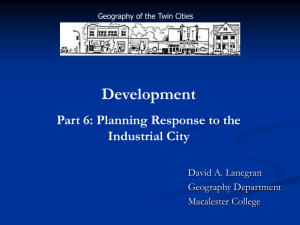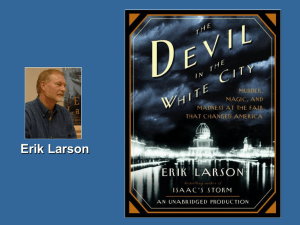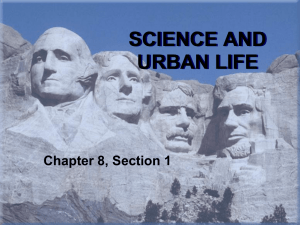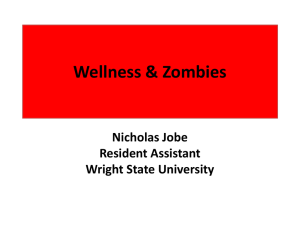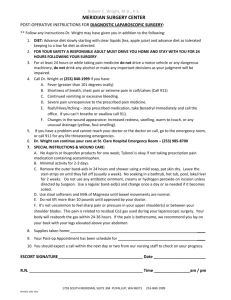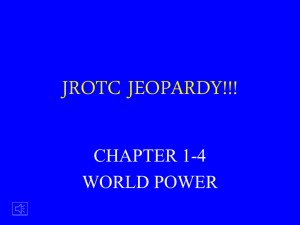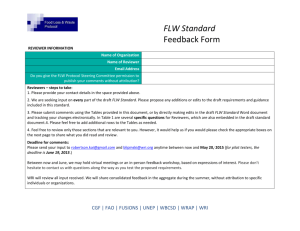Cards
advertisement
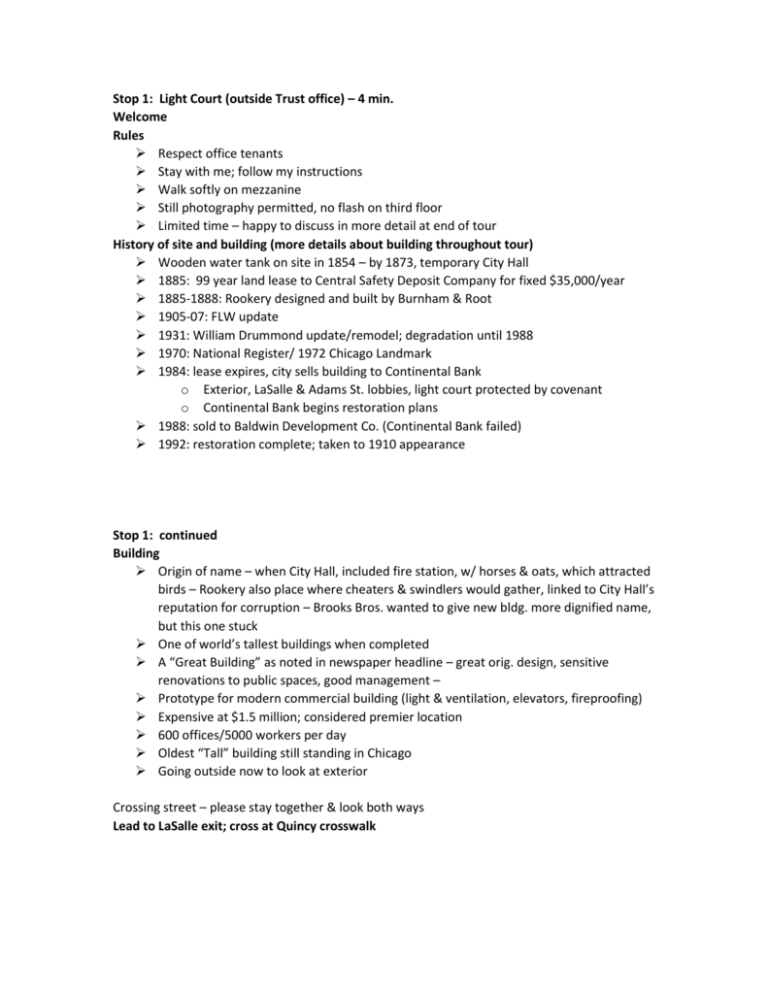
Stop 1: Light Court (outside Trust office) – 4 min. Welcome Rules Respect office tenants Stay with me; follow my instructions Walk softly on mezzanine Still photography permitted, no flash on third floor Limited time – happy to discuss in more detail at end of tour History of site and building (more details about building throughout tour) Wooden water tank on site in 1854 – by 1873, temporary City Hall 1885: 99 year land lease to Central Safety Deposit Company for fixed $35,000/year 1885-1888: Rookery designed and built by Burnham & Root 1905-07: FLW update 1931: William Drummond update/remodel; degradation until 1988 1970: National Register/ 1972 Chicago Landmark 1984: lease expires, city sells building to Continental Bank o Exterior, LaSalle & Adams St. lobbies, light court protected by covenant o Continental Bank begins restoration plans 1988: sold to Baldwin Development Co. (Continental Bank failed) 1992: restoration complete; taken to 1910 appearance Stop 1: continued Building Origin of name – when City Hall, included fire station, w/ horses & oats, which attracted birds – Rookery also place where cheaters & swindlers would gather, linked to City Hall’s reputation for corruption – Brooks Bros. wanted to give new bldg. more dignified name, but this one stuck One of world’s tallest buildings when completed A “Great Building” as noted in newspaper headline – great orig. design, sensitive renovations to public spaces, good management – Prototype for modern commercial building (light & ventilation, elevators, fireproofing) Expensive at $1.5 million; considered premier location 600 offices/5000 workers per day Oldest “Tall” building still standing in Chicago Going outside now to look at exterior Crossing street – please stay together & look both ways Lead to LaSalle exit; cross at Quincy crosswalk Stop 2: SW corner of LaSalle & Quincy 4 min. Exterior: Early skyscraper – 11 story cube: LaSalle 178 ft., Adams 168 ft., height 165 t. Built for Central Safety Deposit Co. – looks like fortress, tourelles at top [photo of exterior] Richardsonian Romanesque (arch) with Moorish ornament – heavy rusticated stone LaSalle and Adams sides are masonry construction – contributes to feeling of solidity Quincy and Rookery sides (1st & 2nd floors) and interior light court are cast iron skeleton construction to allow for more and larger windows Rounded brick softens edges LaSalle side looks like 5 sections separated horizontally/vertical divisions emph fortress Grillage support system: web of steel rails to support bldg. on marsh Extended under street so increased taxes Planned for 1” settling – was right on – incredible engineering calculations Cross LaSalle – enter thru lobby – look at rooks, lobby right inside door, elevator door design Stop 3: Foot of Grand Staircase (2 min.) Progression of space: open - to low, dark - to open and light Burnham & Root Met as draftsmen in another arch. office – partnered in 1873 One of Chicago’s most successful arch firms 1880’s – 90’s Coordinated planning & construction for 1893 Columbian Exposition Burnham co-authored 1909 Plan of Chicago Burnham managed firm; Root was primary designer Root brilliant engineer, designed ornamentation, died at 41 in 1891 Root design in light court primarily iron grill work, ornamentation Ed Waller – friend of Burnham & FLW Boyhood friend of Burnham’s – participated w/ Burn. on initial conceptual planning for Rookery 1905 – bldg. mgr of Rookery – hires FLW to remodel lobby – risky, FLW had done only residential designs thus far Stop 3 continued Light court – restored to 1910 appearance (Wright’s remodel) Made to support retail on two lower floors Offices in square donut shape – inner and outer – more rentable space Inner offices quiet, lots of light from open light shaft and white glazed brick Floors 3-11 open to sky for light, ventilation FLW uses incised marble to connect outer lobbies w/ light court Respectful of Root – only true W elements are urns, pendant lights, oriel stair support Pause Foot of Oriel Stairs (30 sec.) Better view of Wright pendant lights – similar to UT Compare risers on grand stairs (marble) to risers on oriel (iron grill) Orig grand stairs had grille – could see thru them across light court Note two patterns on railing as we go up Grammar of Ornament –1856 book of decorative elements Root on left (decorative) Wright on right (geometric), Wright respected Root’s design but stylized it Remind to use hand rails Stop Four Elevator Lobby 3rd floor (2 min.) Root design in ornamental iron – note corner pillars and balusters Look up the stairwell for iconic view Stairs served as fire escape as they are outside the west wall of light court Look into inner court White and gold pick up color scheme of light court below White enamel brick – easy to clean, reflective – higher rents for interior offices (quiet, light) Originally shaft is open to sky – ventilation pre-air conditioning Skylight added in 1988 to protect light court - below Terra cotta trim adds decorative element Remind to walk quietly around Down grand staircase, stop on north side Stop 5 North Side of Grand Staircase 3 min. Light court Updated by Wright in 1905-7 W at peak of Prairie period, just returned from Japan – little of that here W used Root’s LaSalle lobby marble design and used it to integrate lobbies and light court Root used bronze, copper, grillwork Grates next to floor are original Root designs – see echoes in incised marble Wright: incised gilded marble on sides of stairs, balconies, wrapped around columns Urns replaced electroliers Stop 6 Exposed Column 3 min Fate of other early skyscrapers Demolished, replaced by more modern, higher bldgs. – most on block in 1888 gone by 1930 99 year lease on Rookery made it more profitable to update than replace 1931 renovation – William Drummond arch & Barry Byrne contractor – both had worked in FLW Studio Update needed to support premium rents Clients wanted more space on 2nd floor Both lobbies converted to single story – stairs added on west side from mezz to main fl. Installed “modern” elevators – bird theme on doors done by Annette Byrne Changes 1945-1975 Starts to deteriorate; light court roof leaks Skylight ext covered with tar paper - Light court grillwork & pendant lights painted white Inner store fronts covered 1988-1992 renovation – Baldwin (purchaser), McClier (arch firm), & Harboe (lead architect) Restored to 1910 look (best documented, suited for current tenant needs) Exposed column shows original Root design – idea of how orig light court appeared Found orig mosaic floor when Drummond stairs removed; pattern replicated in rest of light court Stop 7 South side of light court near shop Wrap-up 5 min. Burnham offer (skip on library tour) Root dies in 1891, Burnham needs “creative” design architect for firm In 1893/4 at Ed Waller’s house, offers Wright 6-year education trip to Paris, Rome – Wright declines Burnham continues with series of partners – Atwood – very successful LARGE firm Eventually becomes Graham, Anderson, Probst and White, which remained an important firm until the 1990’s Wright’s future goes on to create the Prairie style Worked for 72 years, constantly innovating Visit H&S, UT, RH to see the breadth and depth of his work in this early period Thanks for joining us today. Stop 8: Elevator Ride Up Why Burnham & Root located here Prestige location – view of Lake Michigan & Jackson Park (site of Columbian Exposition) Top floor to demonstrate safety of skyscrapers In 1992 restoration, mechanicals were moved to the back of the building Clients would originally have used main elevators to get to B&R’s offices Story of Columbian Exposition told in The Devil in the White City Reminder: walking thru workspace to get to library Stop 9: Outside Burnham Library (1 min.) 1888 layout (use floorplan drawing) Burnham, Root offices Drafting area – 29 tables – large operation o Monadnock, Flatiron in NY, Union Station in DC Stayed here until 1906, relocated to Railway Exchange Building (now Santa Fe Bldg) Stop 10: Burnham Library (5 min.) Planned 1893 Columbian Exposition from this room Consortium of Chicago & East Coast arch firms Agreed on design concepts – all followed “white city” concept except Louis Sullivan’s Transportation Building View in 1888 – unobstructed to lake, Jackson Park Condition in 1988 Room divided Wood ceiling covered over Fireplace painted white Restored to 1888 appearance – as per photo Stop 11: Elevator Ride Down Burnham offer Root dies in 1891 – Burnham wants creative design partner Offers Wright 6-year education trip to the Beaux Arts in Paris, then to Rome – Wright declines Says Sullivan spoiled the Beaux Arts for him, or him for the Beaux Arts Burnham continues with series of partners – Atwood – very successful LARGE firm More Wright This is just one example Worked for 72 years, continually innovating Stop 12: Outside ShopWright Thank you for joining us today. Please tour other Wright sites: Home & Studio in OP – Wright’s laboratory, birthplace of the Prairie Style Unity Temple in OP, Wright’s first significant public building Robie House in Hyde Park, Wright’s quintessential Prairie style house


